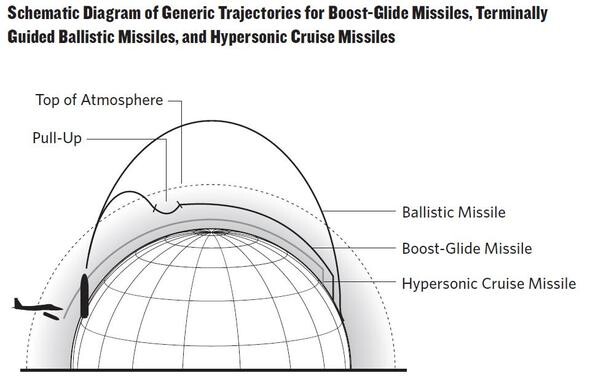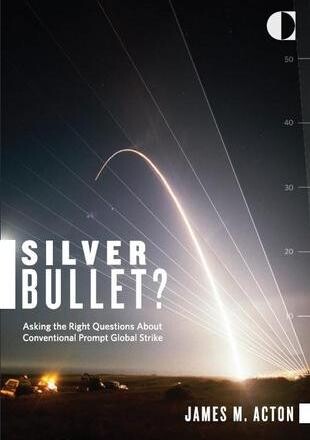hankyoreh
Links to other country sites 다른 나라 사이트 링크
Report: US developing missile that can hit anywhere within one hour

By Park Hyun, Washington correspondent

A recent report revealed that the US Department of Defense is developing a cutting-edge long-range missile capable of hitting any target in the world - including North Korea’s nuclear facilities - within an hour.
In a report published at the beginning of this month, James Acton, a researcher at the Carnegie Endowment for International Peace (CEIP), explained the current status of the development of conventional prompt global strike (CPGS) weapons.
Development of CPGS weapons began in 2003. Outfitted with a conventional ballistic warhead, such weapons are designed to travel at supersonic speeds faster than Mach 5. The idea is to be able to hit a target thousands of kilometers away within an hour of making the decision to strike. Whereas current ballistic missiles are accurate within a radius of 100 meters or more, CPGS weapons would be accurate within a few meters.
The report explained that, while no decision has been made on whether or not to acquire the weapon, the recent geopolitical situation has helped arguments for the weapon’s necessity gain traction with the administration of US President Barack Obama and the US Congress.
North Korea and Iran’s nuclear and ballistic missile programs, along with China’s anti-satellite weaponry, are the grounds used to argue for introducing the weapon, the report said.
The CEIP report also indicated that the technology required to develop the weapon is maturing. A successful test launch of the advanced hypersonic weapon (AHW), the first model in this line of weapons, was held in 2011, and the supersonic cruise missile X-51A WaveRider was tested successfully for the second time in May 2013.
One of the hypothetical scenarios posited by the report in which such a weapon would be needed was a preemptive strike or a counterattack on North Korean nuclear weapons. It said that, if the US believed that North Korea or Iran were on the verge of using nuclear weapons and decided to make a preemptive strike, it would need to use what is called “strategic surprise.” This would involve making sure the target country is unaware of the missile launch until just before impact.
The report also said that, even if North Korea or Iran had already used a nuclear weapon, a swift attack might be necessary to prevent them from striking again. “Some North Korean road-mobile missiles, such as the Nodong, must be fueled before use, creating a window of maybe thirty to ninety minutes,” the report said, suggesting that these weapons could be used flexibly in such situations.
Nevertheless, the report warned that there is a risk that this weapon could accidentally provoke a war if another country mistakenly thought that the missile being launched was a nuclear weapon or if there was confusion about the missile’s target. In fact, former US President George W. Bush pushed for a bill in 2006 to have such weapons deployed within two years, but these efforts were stymied because of opposition in Congress.
The bill that had been proposed was to replace some of the nuclear warheads on the ballistic missiles that can be launched from submarines with conventional warheads. The idea was that these could be used in preemptive strikes. Congress, on the other hand, was concerned that Russia or China could confuse the launch of such a missile as the launch of a nuclear weapon, which could then trigger a nuclear war.
Subsequent to this, the US Department of Defense altered its course toward using non-ballistic missile technology such as supersonic cruise missiles in order to avoid this danger. However, because US enemies would find it difficult to determine what the missile’s target was, the risk remains that an unintended war could break out.
The Obama administration has also supported the development program for this weapon within the current budget, the report noted, and it is expected that there will a major decision on developing and acquiring the weapon within two or three years.
However, the report noted that developing the weapon today costs billions of dollars more than in the past. “Obama’s latest budget, released in April 2013, calls for reductions in CPGS funding by about 40 percent compared to the previous year,” the report said. “If sequestration - across-the-board spending cuts imposed in early 2013 under the Budget Control Act of 2011 - is not rolled back, the affordability of the entire program may be called into question.”
Please direct questions or comments to [english@hani.co.kr]

Editorial・opinion
![[Column] A death blow to Korea’s prosecutor politics [Column] A death blow to Korea’s prosecutor politics](https://flexible.img.hani.co.kr/flexible/normal/500/300/imgdb/original/2024/0415/7517131654952438.jpg) [Column] A death blow to Korea’s prosecutor politics
[Column] A death blow to Korea’s prosecutor politics![[Correspondent’s column] The US and the end of Japanese pacifism [Correspondent’s column] The US and the end of Japanese pacifism](https://flexible.img.hani.co.kr/flexible/normal/500/300/imgdb/original/2024/0412/1017129080945463.jpg) [Correspondent’s column] The US and the end of Japanese pacifism
[Correspondent’s column] The US and the end of Japanese pacifism- [Guest essay] How Korea turned its trainee doctors into monsters
- [Guest essay] As someone who helped forge Seoul-Moscow ties, their status today troubles me
- [Editorial] Koreans sent a loud and clear message to Yoon
- [Column] In Korea’s midterm elections, it’s time for accountability
- [Guest essay] At only 26, I’ve seen 4 wars in my home of Gaza
- [Column] Syngman Rhee’s bloody legacy in Jeju
- [Editorial] Yoon addresses nation, but not problems that plague it
- [Column] Can Yoon and Han stomach humble pie?
Most viewed articles
- 1[Column] A death blow to Korea’s prosecutor politics
- 2[News analysis] Watershed augmentation of US-Japan alliance to put Korea’s diplomacy to the test
- 3[Guest essay] How Korea turned its trainee doctors into monsters
- 4[Photo] Cho Kuk and company march on prosecutors’ office for probe into first lady
- 5‘National emergency’: Why Korean voters handed 192 seats to opposition parties
- 6[Column] A third war mustn’t be allowed
- 7Exchange rate, oil prices, inflation: Can Korea overcome an economic triple whammy?
- 8After Iran’s attack, can the US stop Israel from starting a regional war?
- 9[Editorial] New KBS chief is racing to deliver Yoon a pro-administration network
- 10[Editorial] S. Korea should take a note from US-China tactical compromise